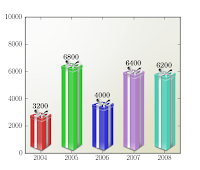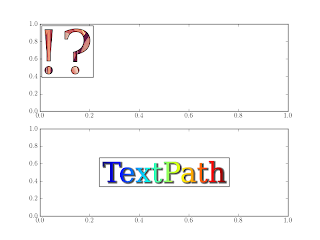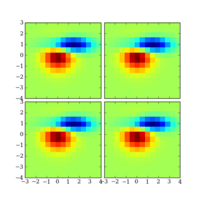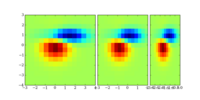ax.grid(True)
ax.gridlines.set_visible(False) # this is just to make code works with future mpl.
ax.xaxis.set_visible(True)
ax.xaxis.set_zorder(2.6)
ax.yaxis.set_zorder(2.6)
ax.yaxis.set_visible(True)
for t in ax.xaxis.majorTicks + ax.yaxis.majorTicks:
t.gridOn = True
t.tick1On = False
t.tick2On = False
t.label1On = False
t.label2On = False
plt.show()
Here is a complete example, a modified version of simple_axisline2.py
import matplotlib.pyplot as plt
from mpl_toolkits.axes_grid.axislines import SubplotZero
import numpy as np
fig = plt.figure(1, (4,3))
# a subplot with two additiona axis, "xzero" and "yzero". "xzero" is
# y=0 line, and "yzero" is x=0 line.
ax = SubplotZero(fig, 1, 1, 1)
fig.add_subplot(ax)
# axes.toggle_axisline(False)
# make xzero axis (horizontal axis line through y=0) visible.
ax.axis["xzero"].set_visible(True)
ax.axis["xzero"].label.set_text("Axis Zero")
ax.axis["xzero"].label.set_bbox(dict(boxstyle="round",ec="r", fc="w"))
ax.axis["xzero"].major_ticklabels.set_bbox(dict(boxstyle="square",
ec="none", fc="w", alpha=0.5))
# make other axis (bottom, top, right) invisible.
for n in ["bottom", "top", "right"]:
ax.axis[n].set_visible(False)
xx = np.arange(0, 2*np.pi, 0.01)
ax.plot(xx, np.sin(xx))
ax.grid(True)
ax.gridlines.set_visible(False) # this is just to make code works with future mpl.
ax.xaxis.set_visible(True)
ax.xaxis.set_zorder(2.6)
ax.yaxis.set_zorder(2.6)
ax.yaxis.set_visible(True)
for t in ax.xaxis.majorTicks + ax.yaxis.majorTicks:
t.gridOn = True
t.tick1On = False
t.tick2On = False
t.label1On = False
t.label2On = False
plt.show()









